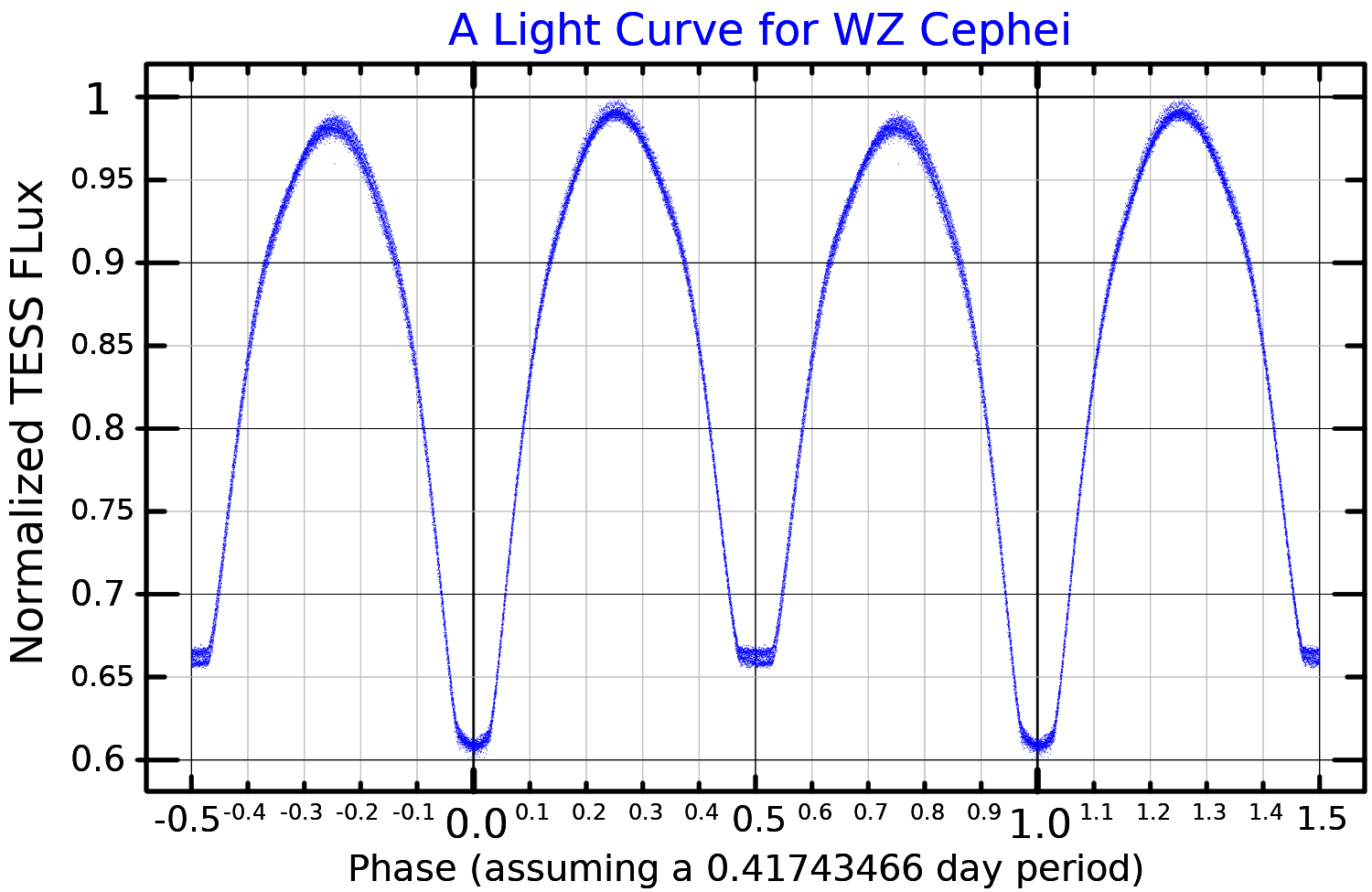WZ Cephei on:
[Wikipedia]
[Google]
[Amazon]
WZ Cephei is an 
eclipsing binary
A binary star is a system of two stars that are gravitationally bound to and in orbit around each other. Binary stars in the night sky that are seen as a single object to the naked eye are often resolved using a telescope as separate stars, in wh ...
star of W Ursae Majoris
W Ursae Majoris (W UMa) is the variable star designation for a binary star system in the northern constellation of Ursa Major. It has an apparent visual magnitude of about 7.9, which is too faint to be seen with the naked eye. However, i ...
-type in the constellation of Cepheus, located 880 light year
A light-year, alternatively spelled light year, is a large unit of length used to express astronomical distances and is equivalent to about 9.46 trillion kilometers (), or 5.88 trillion miles ().One trillion here is taken to be 1012 ...
s away from the Sun. The stars orbit around a common orbital barycenter every 0.41744 days (slightly over 10 hours). Timing analyses have revealed the possible presence of a third low-mass stellar
Stellar means anything related to one or more stars (''stella''). The term may also refer to:
Arts, entertainment, and media
* ''Stellar'' (magazine), an Irish lifestyle and fashion magazine
* Stellar Loussier, a character from ''Mobile Suit Gun ...
companion in a wide orbit.

Presence of a third body
According to Zhu & Qian (2009) a third low-mass object of stellar nature could be responsible of orbital period variations observed for WZ Cep with a periodicity of roughly 32 years. Such a companion would yield a minimum mass of 0.17 Solar masses and be located 26.6Astronomical Unit
The astronomical unit (symbol: au, or or AU) is a unit of length, roughly the distance from Earth to the Sun and approximately equal to or 8.3 light-minutes. The actual distance from Earth to the Sun varies by about 3% as Earth orbits t ...
s (nearly the same orbital separation of Neptune
Neptune is the eighth planet from the Sun and the farthest known planet in the Solar System. It is the fourth-largest planet in the Solar System by diameter, the third-most-massive planet, and the densest giant planet. It is 17 times ...
in Solar System
The Solar SystemCapitalization of the name varies. The International Astronomical Union, the authoritative body regarding astronomical nomenclature, specifies capitalizing the names of all individual astronomical objects but uses mixed "Solar S ...
) from the eclipsing binary. The star could likely turn out a Proxima Centauri
Proxima Centauri is a small, low-mass star located away from the Sun in the southern constellation of Centaurus. Its Latin name means the 'nearest tarof Centaurus'. It was discovered in 1915 by Robert Innes and is the nearest-kno ...
-analog, with inferred luminosity 3.7 percent that of Sun and 20 percent of its radius, according to mass-radius relationship.
References
Cepheus (constellation) Cephei, WZ W Ursae Majoris variables F-type main-sequence stars {{Multi-star-stub